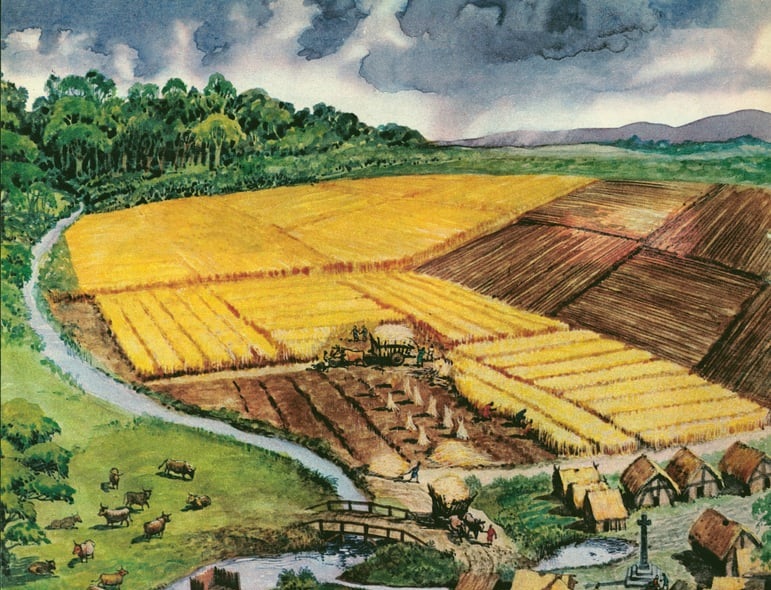Difference between revisions of "Crop Rotation"
Tao alexis (talk | contribs) |
Tao alexis (talk | contribs) |
||
| Line 2: | Line 2: | ||
'''Crop rotation''' is a [[Farmland|farming]] practice that involved systematic changing of crops planted in a particular field from one season to the next. Starting after the 9th century, the method steadily gained popularity throughout the medieval period, increasing the lifespan of cultivated fields while encouraging food production and the community's general health. | '''Crop rotation''' is a [[Farmland|farming]] practice that involved systematic changing of crops planted in a particular field from one season to the next. Starting after the 9th century, the method steadily gained popularity throughout the medieval period, increasing the lifespan of cultivated fields while encouraging food production and the community's general health. | ||
| − | Most [[Type-7 Hex|type-7]] or type-6 hexes practice [[Open-field Farming|open-field farming]], where crop rotation is only a common practice if a [[Settlements|settlement]] is present. Crop rotation is standard practice anywhere else that cultivation occurs. | + | Most [[Type-7 Hex|type-7]] or type-6 hexes practice [[Open-field Farming|open-field farming]], where crop rotation is only a common practice if a [[Settlements|settlement]] is present. Crop rotation is standard practice anywhere else that cultivation occurs. With time, the effect is to increase food supply by fifty percent — though this at first produced a concommitant increase in population, so that surpluses remained steady for a generation or more after rotation was implemented. |
== Benefits == | == Benefits == | ||
Revision as of 23:47, 4 September 2023
Crop rotation is a farming practice that involved systematic changing of crops planted in a particular field from one season to the next. Starting after the 9th century, the method steadily gained popularity throughout the medieval period, increasing the lifespan of cultivated fields while encouraging food production and the community's general health.
Most type-7 or type-6 hexes practice open-field farming, where crop rotation is only a common practice if a settlement is present. Crop rotation is standard practice anywhere else that cultivation occurs. With time, the effect is to increase food supply by fifty percent — though this at first produced a concommitant increase in population, so that surpluses remained steady for a generation or more after rotation was implemented.
Benefits
The prevention of soil exhaustion varied the nutrient demands of crops, as crops subsequent to wheat or barley, like peas or beans, could correct nitrogen levels in the soil. Though not understood by the farmer, this also helped reduce the build-up of certain pests or bacteria in the soil, which would proliferate when targeting one specific plant. By disrupting the cycle, a culture that had no understanding of pesticide could yet reduce this problem.
The practice also allowed farmers to manage weeds more effectively. Different crops had varying growth habits and provided different shading; this helped suppress the growth of weeds from year to year, making it difficult for them to establish themselves. The risk of total crop failure and famine were also mitigated; while one crop might suffer due to blight or adverse weather, other crops would survive. This stabilised food production overall.
Stability increased the economic sustainability of hamlets and villages; with type-5 hexes and better (created as crop rotation became fixed over time), this aided with increasing food surpluses.
See Bread (symbol)
